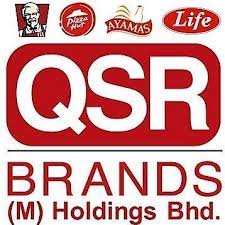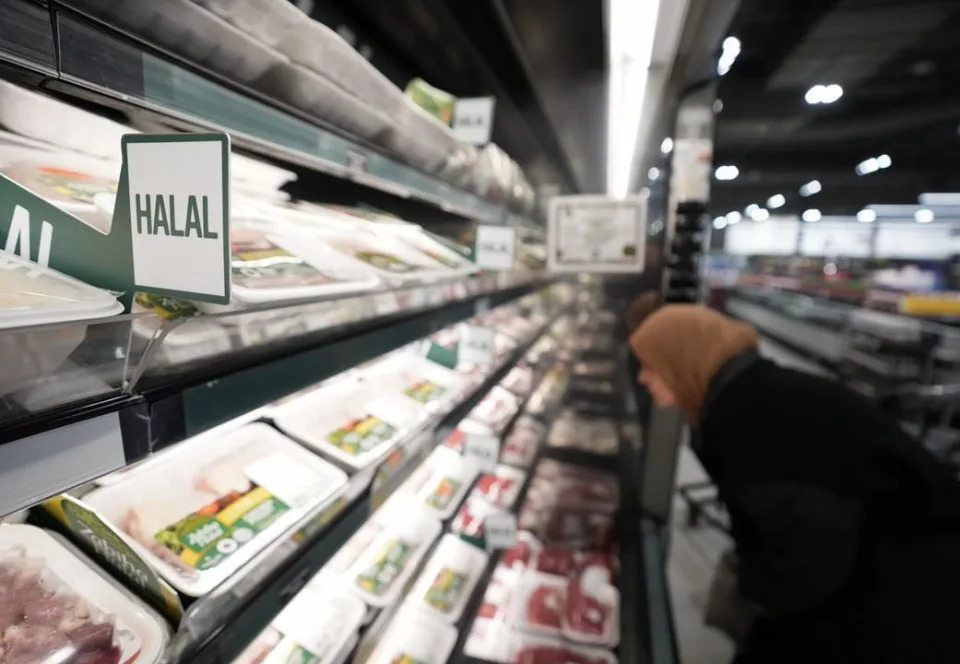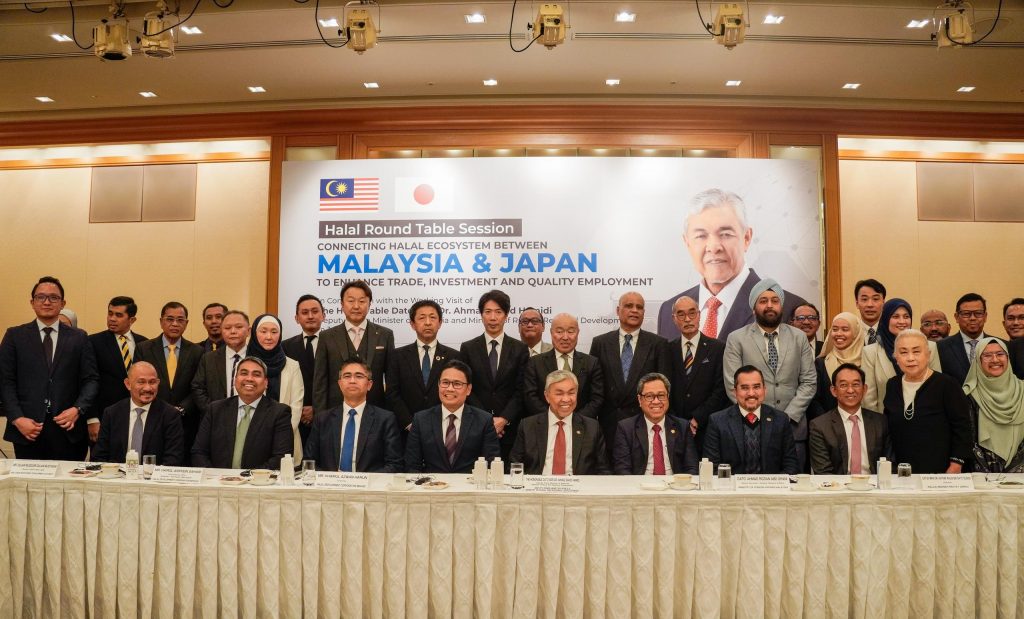Lack of awareness and manpower among challenges faced by the halal industry, while increasing feed price the main reason for rising cost.
 THE halal poultry industry in Malaysia stands as a significant economic driver, boasting resilience and growth in the face of global challenges.QSR Brands (M) Holdings Bhd head of governance David Chiam Joy Yeow highlighted the industry’s significance, emphasising the importance of compliance and governance for the people in Malaysia.
THE halal poultry industry in Malaysia stands as a significant economic driver, boasting resilience and growth in the face of global challenges.QSR Brands (M) Holdings Bhd head of governance David Chiam Joy Yeow highlighted the industry’s significance, emphasising the importance of compliance and governance for the people in Malaysia.
“Malaysia has one of the highest per capita consumptions per year of poultry at about 50kg and it is an increasing trend.
“That means that poultry consumption continues to be popular compared to other sources of protein,” he told The Malaysian Reserve (TMR).
According to the Statista Research Department, Malaysians ranked among the top global consumers, consuming 50 kg of poultry meat per person in 2022. Despite environmental concerns and calls for reduced meat consumption, Malaysians maintain a strong preference for poultry.
Halal Regulations
The Department of Islamic Development Malaysia (Jakim) and Halal Development Corp Bhd (HDC) are Malaysia’s leading halal regulators, leveraging their knowledgeable talent to enhance mechanisms and infrastructure in line with Malaysia’s Halal Industry Master Plan 2030.
Chiam mentioned that the enforcement efforts by these agencies not only provide assurance to consumers regarding the halal status but also add credibility to Malaysia’s halal certification logo on products and premises.
Although the process is stringent, the constant engagement with applicants and the government allows for a faster turnaround time for certifications, documentation and approvals.
This enables faster market entry for players seeking to compete in the halal market.
However, QSR Brands head of halal compliance Hayazi Darus said the poultry industry lacks awareness when it comes to halal requirements.
“We have more than 700 suppliers. So, if the authorities are introducing a new requirement, we need to ensure that all our suppliers, middlemen, as well as internal and external entities are aware about the updates.
“This is very challenging because if we do not meet any of the requirements, we will fail in the application on the grounds of non-conformity,” he told TMR.
Another challenge that the industry faces is insufficient manpower.
Hayazi said companies are required to hire their own halal executives, which is an additional cost for them. Companies also need to train their staff according to halal standards which are recognised by Jakim. For this, the company needs to ensure they have halal experts or executives to conduct these training sessions.
“We need to bear the cost. This is something that we are still negotiating with the authorities,” Hayazi explained.
He suggested to the authorities that universities should provide halal courses that can be used when students join the industry upon graduation.
On the other hand, Malaysia’s poultry industry is still not as advanced as it could be.
According to Yahoo! Finance, Malaysia ranks 19th among the largest poultry-producing countries globally, surpassing Germany and closely trailing Vietnam.
Germany produces about 1.54 million metric tonnes (MT) of poultry, while Malaysia produces about 1.63 million MT right behind Vietnam at 1.7 million MT of poultry.
Furthermore, Malaysia is also expected to be one of the top 10 egg exporters in 2021, reaching 1.97 million MT by 2026.
Despite this, Malaysia is a relatively small country and it would be close to impossible to compete with countries such as China or the US which are producing about 21.3 million MT of poultry meat.
However, Malaysia can enhance its position by leveraging current technology, targeting trade markets and reinforcing these efforts with government support.
Challenges for Poultry Farmers
Food Security, Innovation and Development Research Centre (FInDER) director Prof Dr Risyawati Mohamed Ismail said poultry farming remains traditional in Malaysia and globally, but initiatives are being implemented to improve efficiency and waste management for sustainability.
“Waste from poultry farms undergoes manure recycling and is utilised as fertiliser for crops, promoting nutrient recycling and reducing the environmental effect of manure disposal.
“Farmers have also begun to implement composting systems at their farms in order to manage and recycle organic waste,” she told TMR.
Malaysian farmers are implementing precision feeding techniques and locally sourced feed ingredients to reduce waste and improve efficiency.
Automation and data-driven technology are minimal, but IT-based solutions like smart farming are expected to transform the poultry industry.
Risyawati remarked that the most crucial issue affecting the poultry industry is the continuously increasing feed price that raises costs for farmers, especially those with smaller farms who cannot bear the brunt as much.
“Covid-19 pandemic is not the main factor affecting the growth or decline in Malaysia poultry market.
“The most crucial issue affecting the poultry industry is the continuous increase of feed price which has been going on since pre-pandemic,” she said.
Increased feed prices in poultry farming can directly impact operational costs, potentially decreasing profit margins, especially for smaller-scale farmers who may struggle to absorb the additional costs.
“To offset the increased production costs, poultry farmers may pass on some of the expenses to consumers by raising the prices of poultry products, including chicken meat and eggs.
“This, in turn, can affect consumer spending and food affordability,” Risyawati added.
She said technological innovations and trade will continue to advance, and there is not much an animal farm can do to control an unexpected pandemic, but government programmes that are in place are meant to be the biggest helpers in the poultry industry.
Malaysia is expected to be one of the top 10 egg exporters in 2021, reaching 2m MT by 2026
“Malaysia’s Cabinet authorised a RM528.25 million subsidy to boost Malaysian chicken farmers on Feb 9, 2022 (short-term measure). “The government agreed to give chicken farmers a subsidy of 60 sen per kg, based on the farm-level price of live chickens at RM 5.90/ kg and the retail price of standard chicken at RM8.90/kg, as well as a subsidy of five sen per egg from all categories,” Risyawati said.
The regulation aims to alleviate poultry farmers’ burden by providing subsidies for feed, stabilising supply and ensuring affordable chicken and egg purchases.
It also funds research and development for industry growth, sustainability and competitiveness. However, she believes that these subsidies have not yet demonstrated significant nationwide benefits and impact. It is essential to ensure that the supply chain becomes self-sustaining and efficient enough to withstand the impact of international problems or financial crises.
“Long term, the government should consider promoting locally produced feed that uses locally available ingredients rather than imported raw materials.
“The ringgit value fluctuation has a considerable impact on feed prices. Locally farmed raw materials would not only lower the price of animal feed but would also support the growth of the feed production business, further strengthening our local husbandry industry,” she said.
Farmers have begun to implement composting systems in order to manage and recycle organic waste, says Risyawati
Overall, Risyawati pointed out that to truly help the industry in the long term, Malaysia must be able to decrease the costs of chicken feed. This will also help the average consumer since the downstream effect will cause egg prices to drop.
However, more subsidies such as on farming equipment and improved waste management systems will also help support the poultry industry in many ways.
“The establishment or improvement of poultry farming infrastructure, such as chicken houses, equipment and waste management systems, may also be subsidised by the government through allocations of small grants to farmers.
“These subsidies may be provided for the purpose of fostering agriculture. It is possible that this will improve the effectiveness and long-term viability of poultry farming operations,” she said.
While the likelihood of another pandemic or the emergence of a new disease appears to be quite low, there should also be measures in place to minimize the impact on the poultry industry in case of worker loss.
The government can support poultry producers during disease outbreaks by providing financial aid for biosecurity measures, vaccines and disease management programmes.
This safeguards the sector, ensures food safety and enhances farmers’ knowledge and skills for sustainable and efficient chicken production.
- This article first appeared in The Malaysian Reserve weekly print edition



